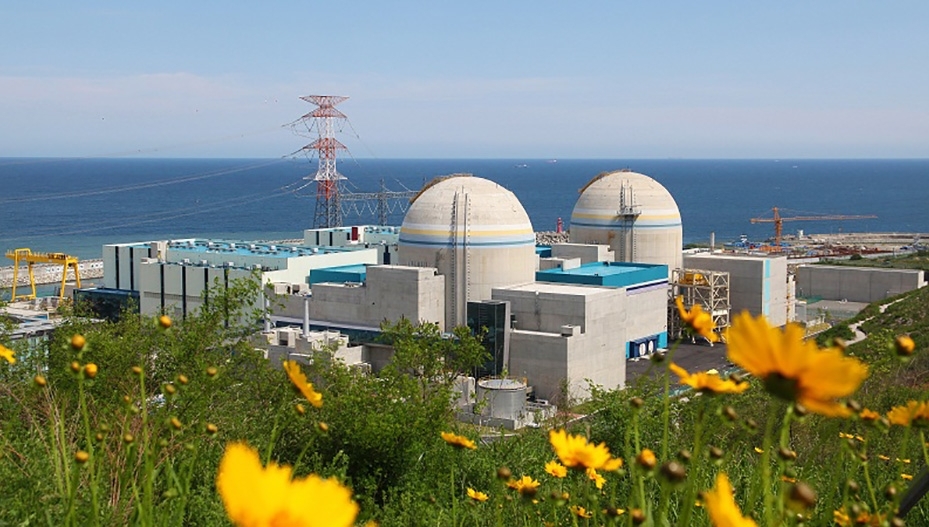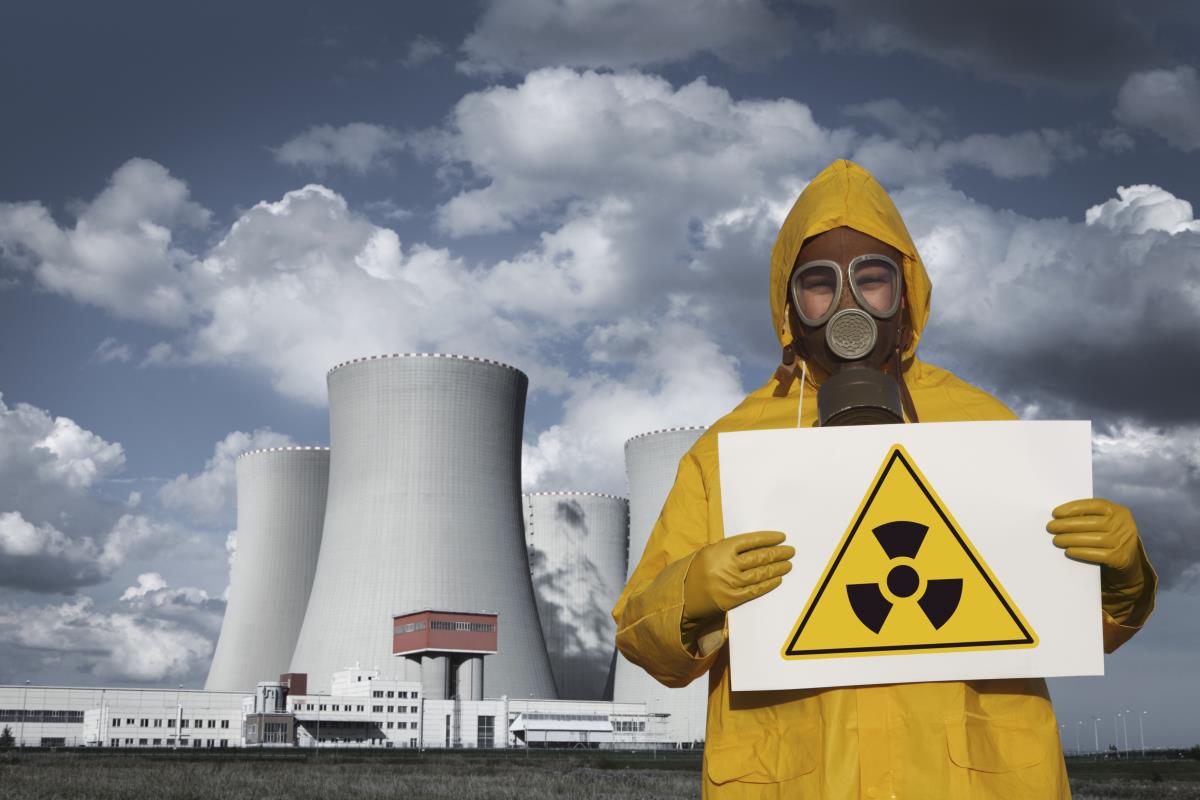Recently, a movie named ‘Pandora’ was released in Korea. This movie depicted the aftermath of an accidental nuclear explosion and amplified the public fear over such a disaster. Such a fear is understandable as Korea has one of the largest concentrations of nuclear power plants in the world. The earthquakes that occurred last year, in a region of the country, with a high concentration of power plants, only exacerbated these fears. Thus, the newly established Moon Jae-in Administration promoted policies to phase out nuclear power plants. This leads us to question the current status of nuclear power plants in Korea and our best course of action.
The Currents Status of Nuclear Power Plants in Korea
 |
Currently, there are 24 domestic nuclear (nuclear power plants in operation, and the number of nuclear power plants in Korea is now the fifth largest in the world. Nuclear power production currently accounts for about 30% of Korea's electricity production, which is also ranked fifth in the world. However, renewable energy, which is emerging as an alternative energy source, has yet to become a main power source. As of the end of 2014, nuclear power, coal, and gas accounted for 22%, 29% and 33%, respectively, of the country’s power consumption ( 84% of the total consumption). The energy produced by each of these three energy sources were 30%, 39% and 22%. The Energy Basic Plan and the Electricity Supply and Demand Basic Plan foresee that the policies of the three major power sources will continue into the future.
Nevertheless, in 2013, the ‘nuclear facility corruption scandal’, in which tons of substandard components were supplied to the Korea Hydro & Nuclear Power Corporation for several years, as a result of test report forgery, rocked the nation. The fact that the components manufacturer, JS cable, the verification agency, Saehan TEP and the authorizing institution, and KEPCO were all involved was cause for much concern.. The amount of damages suffered by the government is officially estimated to be 9.95 trillion won. . Thus, many Koreans now worry that Korea’s standing in the international nuclear power market will suffer.
 |
The Moon Jae-in Administration has taken a stance aimed at the ‘environment’ and ‘safety’ rather than ‘economic feasibility’. This administration seeks to “transition to safe and clean energy by phasing out nuclear power plants.” The specific contents of the policy are as follows: prohibition of new and extended life-cycle nuclear power plants, reorganization of the electricity rate system, 20% of new renewable energy generation and reorganization of the energy consumption structure. Especially, this policy seeks to increase renewable energy and the efficiency of energy by strengthening the regulations binding large capacity generators and overconsumption sectors.
However, many in the nuclear power industry have stated that Moon’s policies will destroy a nuclear power export market worth 56 trillion won and 300,000 jobs will be lost (Korea is one of six countries that export nuclear power). In addition, in order to increase renewable energy by 20%, by 2030, it will be necessary to install 1.15 times the solar power facilities in Busan and wind power generators in Yeouido and Seoul.
In addition, it is expected that the suspension of the construction of the New-Kori 5,6 power plant will result in 2 trillion won in damages. In accordance with the government's commitment, it will be necessary to increase the share of renewable energy and liquefied natural gas (LNG), which have high electricity generation costs, which would result in raised electricity tariffs. Due to the impossibility of a stable supply of electricity, the voice of concern is high.
Advantages and risks of nuclear power plants
 |
There are some advantages of nuclear power. First of all, high energy efficiency: The energy generated by 1g of uranium used in nuclear power generation has enormous energy efficiency equivalent to 9 drums of oil and 3 tons of coal. Compared to the same weight, uranium has 2 million times the energy of oil and 3 million times the energy of the coal. Secondly, nuclear power uses cheap raw materials. Uranium is a raw material that changes little change in price. Therefore, in countries where oil and coal resources are lacking, such as Korea, nuclear power generation makes sense for economic reasons. According to the projected costs of generating energy, by the OECD, the NEA and the IEA in 2015, the cost of nuclear power generation in Korea was estimated to range from $29 to $51 per MWh. This was the cheapest among the 10 countries surveyed. Lastly, nuclear power produces less CO2 than other energy generators. According to the World Energy Outlook report of the International Atomic Energy Agency (IEA) in 2002, coal produced 1,712MtC (1MtC = 1 million tons of carbon), natural gas 461MtC, and petroleum 271MtC, respectively. Nuclear power is estimated to have zero carbon emissions. In the face of global warming, nuclear power is eco-friendly.
 |
The risks associated with nuclear power come first in the shape of radioactive waste. According to the Korea Hydro & Nuclear Power Corporation website, the cumulative amount of domestic spent nuclear fuel had reached 444,535 by the first quarter of this year (2017). In addition, the amount of radioactive waste generated during the middle of this year (the substances exposed to radioactivity in the development process) totaled 91,111. At present, nuclear waste in Korea is temporarily stored in a storage tank at each power plant, and a separate storage facility for permanent disposal is still in preparation. The nuclear waste storage facilities are expected to reach full saturation by 2024 (they were at 71% in 2014). Therefore, preparations for permanent treatment facilities are in urgent need. But they will not come cheap at a cost of about 53 trillion won. The other problem of nuclear power is radioactivity, which can cause radiation poisoning, leukemia, cancer, and birth defects, stillbirths and premature babies. Simply eating contaminated food can lead to esophageal cancer, lymphocytic leukemia, etc., within a year or two.
Countries That Have Tried to de-nuclearize
 |
Germany, after the Fukushima nuclear power plant meltdown, have shut down nine of their 27 plants thus far, with the rest to follow. Thanks to Germany’s strong renewable energy infrastructure, its renewable energy share of total energy generation reached 30% in 2016 (coal 40%, renewable 30%, nuclear power 13%, etc.), This decision was led by “The Ethics Commission for a Safe Energy Supply” composed of 17 nonofficial members. The Ethics Commission broadcast external training sessions, TV discussions with experts, and press conferences to the public, and nine hours of live TV discussions were watched by about 88 million people. This year, Germany organized the "Citizen Committee for the Selection of Nuclear Wasteland Site." The Commission conducted a telephone survey of 70,000 ordinary citizens, extracted 571 samples, selected 120 of them, and finally, three citizens were selected through expert interviews. These three citizens became members of the “Citizen Committee” along with six experts. They relayed the opinions of citizens to the government. Germany's move away from nuclear power is estimated as being desirable because it has been determined through a multi-year debate with experts and mature public debate.
Next, Switzerland decided to ban nuclear power plants in May 2017, after a fifth referendum on the matter. It was not until the Fukushima accident that congress passed the 'Energy Strategy 2050' initiative, which would ban nuclear power plants from 2016. In May, 58% of citizens agreed. The federal government-led bill provides subsidies to alternative energy industries, such as wind power and solar power. Nuclear power accounts for 35% of Switzerland’s electricity production. Hydropower 60%, solar and wind power 5%. Therefore, the Swiss Government announced that it plans to expand its solar and wind power capacity of 2,832 GWh to 11,400 GWh (4-fold increase) by 2035. In addition, it also plans to decrease energy consumption per person to 16% by 2020 and to 43% by 2035, when compared to 2000.
 |
Paradoxically, Japan has failed in its drive to move away from nuclear power. Despite the Fukushima nuclear power plant incident, in March 11, 2011, and the Japanese Government’s subsequent ’Zero Nuclear Power Plants’ policy, there has been a nuclear reactivation program in order to secure a stable supply of electrical power and secure technology and manpower in the long-term. Even some Japanese businessmen support the nuclear reactivation policy, saying that nuclear power can be beneficial to the Japan’s economy and for global warming. Japan now is aiming to increase its share of nuclear power by 20 ~ 22% by 2030.
Secondly, Sweden also has failed to abandon nuclear power. In Sweden, when the safety of nuclear power plants emerged as a political issue, due to the TMI nuclear accident in the United States in 1979, it held a referendum on the issue in 1980. Following this, the nation decided to continue the six nuclear power plants under construction but not to build any new nuclear power plants after that time. However, in 1995, it concluded that it would be impossible to shut down all 12 nuclear power plants by 2010, and a majority of survey respondents expressed their positive views on nuclear power policies after 2004. As of 2015, 10 nuclear power plants are in operation, except for the two closures due to safety concerns. The Swedish Government announced a new climate and energy strategy that states that new nuclear power plant construction can be mandated if the safety requirements are strengthened. . The Swedish Parliament approved this new strategy in June. Sweden was operating 10 nuclear power plants (9,487 MW in total capacity) as of the end of July 2015 and produces 6.23 × GWh of nuclear power, equivalent to 41.5% of the total power generation in 2014.
It is clear that nuclear power is an energy source that cannot be easily abandoned. Since the Fukushima nuclear accident, many foreign countries have tried to stop leaning too much on nuclear power: some have stopped using nuclear power plants, some have reduced the number of nuclear power plants, some have expanded the proportion of renewable energy, and some have attempted to stop using nuclear power plants but failed. Perhaps, the best course of action for Korea is to maintain and improve the safety standards associated with power plants while phasing in prudent use of renewable energy. In this way can Korea become a ‘nuclear safe country’.
박현지 lilylondon97@gmail.com
<저작권자 © 인하프레스, 무단 전재 및 재배포 금지>

![[보도] 제43대 총학생회 후보자 공청회 개최돼](/news/photo/202404/11686_5015_2626.png) [보도] 제43대 총학생회 후보자 공청회 개최돼
[보도] 제43대 총학생회 후보자 공청회 개최돼
![[보도] 제43대 총학생회 후보자 공청회 개최돼](/news/thumbnail/202404/11686_5015_2626_v150.jpg)
![[보도] 총학생회장 선거 열려···학생사회 대표자는?](/news/thumbnail/202403/11668_5014_266_v150.jpg)
![[보도] 무전공·계열제 논의···학생은 어디에?](/news/thumbnail/202403/11666_5011_2238_v150.jpg)
![[보도] 인하 70돌, 다양한 행사 이어져](/news/thumbnail/202403/11663_5009_165_v150.jpg)
